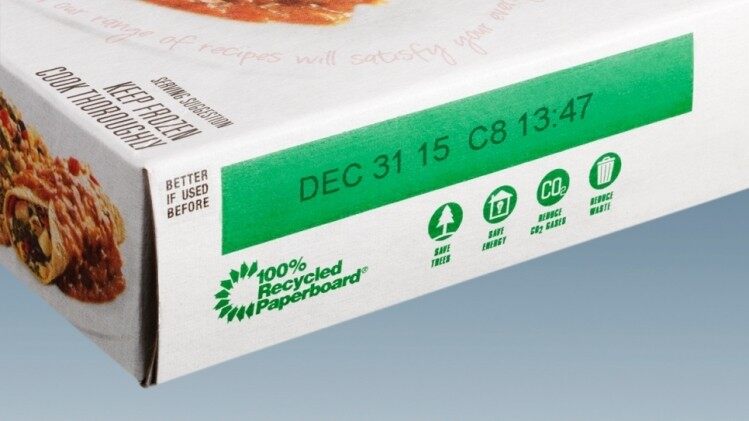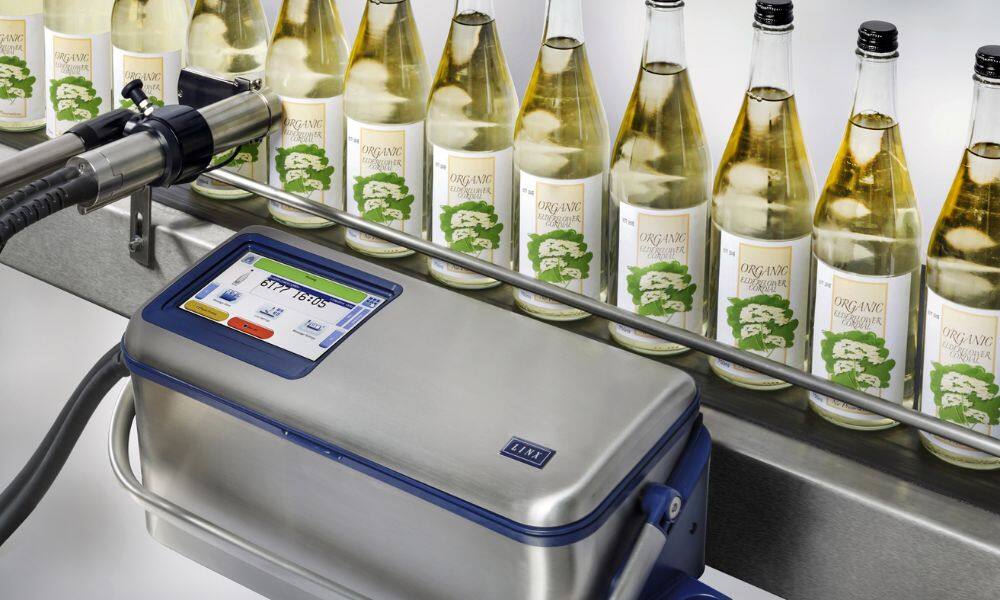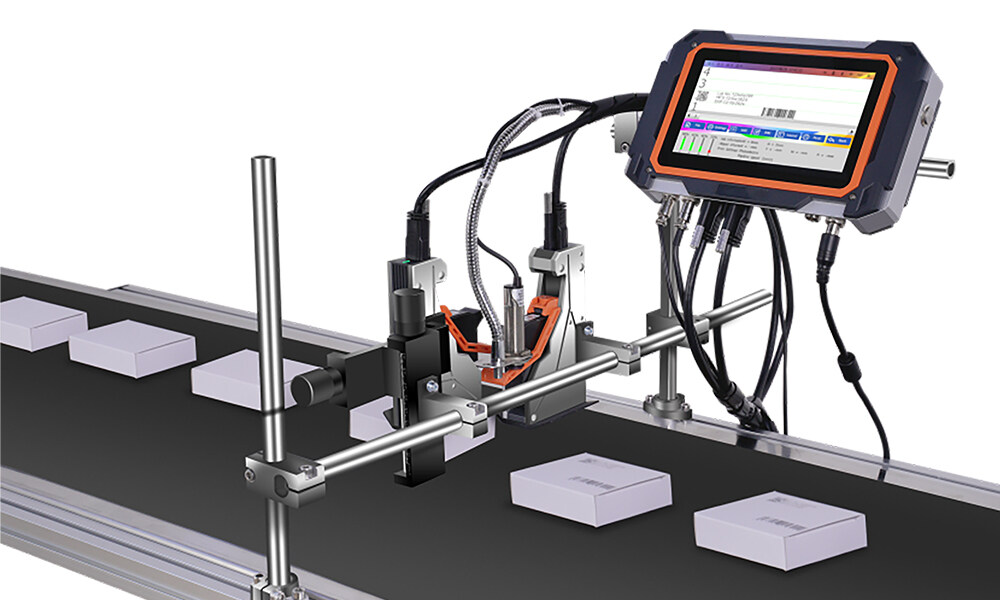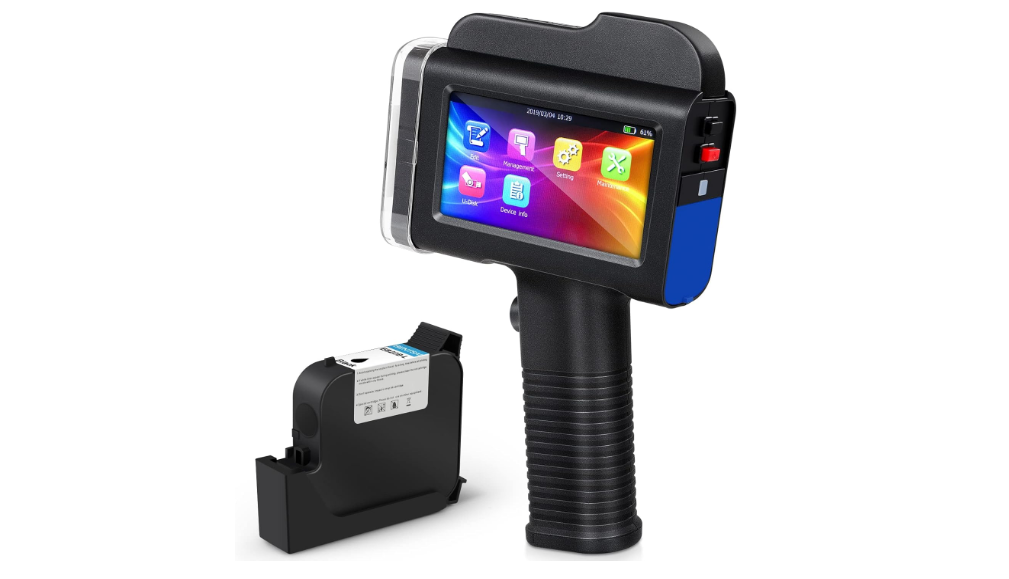How to Choose the Best Inkjet Printer for Food Packaging?
Before you choose an inkjet printer for food packaging, knowing what the printer can accomplish helps you make an informed decision that meets your specific packaging needs effectively. Inkjet printers are crucial for printing information on food packaging. They ensure accurate labeling and essential batch coding, improving traceability and adherence to industry standards. This article explores the guidance on acquiring a suitable food packaging printer, introduces the printer types with their pros and cons, and lists some innovative machines from Bentsai for businesses with different scales.

What factors should be considered when choosing a food packaging printer?
When choosing a printer for food packaging, consider these key factors:
- Print Quality: Look for high-resolution capabilities to ensure clear and legible printing on packaging materials.
- Printing Efficiency: Evaluate printing speed and efficiency to meet production demands without compromising quality.
- Edible Inks: Choose FDA-approved edible ink that adheres well to various packaging surfaces and is suitable for food contact.
- Durability: Select a printer that is sturdy and easy to maintain for long-term use.
- Ease of Integration: Consider compatibility with existing packaging equipment and ease of integration into production lines.
- Cost Effectiveness: Balance initial costs, ongoing consumables, and operational expenses to assess cost effectiveness over the printer's lifespan.
- Brand Credibility: Opt for a printer from a reputable brand known for reliability, quality, and customer support.
Choosing a printer that meets these criteria ensures efficient and compliant food packaging operations.
Which type of inkjet printer is the best for product packaging printing?
The best type of inkjet printer for product packaging printing depends on several factors including the specific requirements of your packaging operation. Here are some common types to consider:

1. CIJ (Continuous Inkjet) Printers:
Continuous Inkjet printers are widely used in industrial applications for their ability to print high-speed and continuous lines of small character text, codes, and images on various substrates. The process involves applying heat to a specially coated thermal paper, creating a durable and fast printout. Here’s a list of the advantages and disadvantages of CIJ printers.
● Advantages:
- High-Speed Printing: CIJ printers can print at very high speeds, making them suitable for fast-paced production lines.
- Versatility: Can handle a wide range of substrates including plastics, metals, glass, and more.
- Cheaper Inks: Generally lower cost for ink supplies.
● Disadvantages:
- High Cost: Although the ink supplies is relatively more affordable, the initial cost of the machine is very high.
- Lower DPI: Results in lower print quality.
- Complex Maintenance: Requires frequent cleaning and maintenance.
- Space Limitation: CIJ printers are bulky and often need to be fixed in one location due to their size and setup requirements.
2. TIJ (Thermal Inkjet) Printers:
Thermal Inkjet (TIJ) printers are known for producing high-resolution, detailed prints and are capable of printing on a wide variety of surfaces, including paper, cardboard, plastic, and metal. With their ease of use and portability, TIJ printers are commonly used in food, retail, healthcare, and manufacturing for tasks such as product labeling, packaging, and marking medical devices. These machines work by heating small resistors to create heat, which causes the ink to vaporize and form a bubble. The rapid expansion of the bubble forces a droplet of ink out of the nozzle and onto the substrate.
● Advantages:
- High Print Quality: TIJ printers produce high-resolution prints with sharp text and graphics.
- Low Maintenance: They have fewer moving parts, reducing maintenance requirements and downtime.
- User-Friendly: TIJ printers are easy to set up and operate, often requiring minimal training.
- Portable: Thermal inkjet printers are commonly designed with compact size, can be carried around, making them ideal for different locations and surfaces.
- Cost-Effective: Lower initial and operating costs.
● Disadvantages:
- Speed Limitations: TIJ printers may not match the high-speed capabilities of CIJ printers.
- Ink Cost: Ink cartridges can be more expensive compared to CIJ printers for high-volume printing.
Recommendation (TIJ):
For food packaging printing, TIJ (Thermal Inkjet) printers are recommended due to their superior print quality, high resolution, ease of use, and versatility in printing on various surfaces. While CIJ printers are beneficial for high-speed, the portability and high-quality prints of TIJ printers make them more suitable for businesses requiring precise and clear QR codes or other intricate designs.
How to Choose the Right Type of Thermal Inkjet Printer for Your Business
Choosing the right thermal inkjet printer involves several considerations:
Many factors will influence the choice of a perfect TIJ printer, including cost, print quality, print speed, durability, compatibility with the packaging materials, ease of use, etc. Today, we will share how you can choose the right type of thermal inkjet printing machine based on the scale of your food and beverage business.
Large Food Production and Processing Companies
Large food production and processing companies handle significant volumes of materials and products, requiring advanced technology and automation for efficiency and quality. They prioritize regulatory compliance and operational excellence to ensure high-quality outcomes. For such needs, industrial inkjet printers offer a robust solution, providing reliable, high-resolution printing to meet the demands of large-scale operations.
Industrial inkjet printers
For operations where the print volume is high, and the need for efficiency and durability is paramount, industrial inkjet printers stand out. These machines are built to operate continuously, producing a consistent output of high-quality markings. They can accommodate a wide range of food packaging materials, from aluminum foil to polyethylene bag, plastic bottles, to glass or stainless steel canned gars. This capability is essential for food packaging, where information such as food ingredients, manufacturer information and batch codes must remain legible and intact throughout the product's lifecycle, enduring conditions like refrigeration, transportation, and handling.
Take Bentsai industrial inkjet printers for example, they are designed with single, dual and four printheads with the print height ranges from 12.7mm, 25mm to 50mm adjustable for various coding and marking needs. Here’s the spotlight of the day from Bentsai’s industrial inline inkjet printers:

Bentsai EB62 Dual Heads Industrial Inkjet Printer
Features:
- Print Height: 2.5mm to 25.4mm
- Print Lines: 1-10 Lines
- Printing Materials: Porous and non-porous materials including plastic, glass, metal, concrete, etc.
- Printing Contents: Text, Numbers, Images, Logos, 2D codes, GS1 codes, Barcodes, Dates, Counter, Variable, Database, Dot Matrix Fonts
- Printing Resolution: 600 DPI
- Print Speed: 120 meters per minute maximum at a horizontal resolution of 75 DPI
- User-friendly Design: 7-inch intuitive touch screen for easy editing
- Versatile Connectivity Options: Features a wide range of external interfaces, including USB, Ethernet, photocell, encoder, and beacon ports. It also supports Bluetooth and Wi-Fi for wireless connections, ensuring flexible and convenient integration into different systems.
Small and Medium Food Production and Processing Companies
Small and medium food production and processing companies often need efficient, cost-effective solutions to manage their operations. These businesses balance quality and productivity while adhering to regulatory standards. Handheld inkjet printer is an excellent choice for these companies, offering portability and flexibility to handle various labeling and coding tasks effectively.
Handheld inkjet printers
Small character handheld inkjet printers are ideal for small to medium food processing and packaging businesses, like bakeries and fresh food retailers. Their portability and compact design make them perfect for on-the-go printing of packaging information without needing a large, stationary setup. Depending on your needs, you can choose between a portable label printer, which uses thermal labels, or handheld date code printer, which prints small details like expiry dates, batch codes, and price tags directly onto products or packaging. Here’s our pick out for you:

Bentsai B35 Portable Handheld Printer Gun
The Hand Held Inkjet Printer Gun Bentsai B35, priced at $700, offers excellent value for its cost. It provides long-term savings with its refillable water-based ink, which reduces ink expenses over time. The printer uses advanced microfluidic MEMS technology for crisp, clear prints and includes features like variable data printing and a photoelectric printing mode for added versatility. Its lightweight design and ability to be mounted on conveyor belts for automatic labeling make it a top choice for businesses needing a reliable and multifunctional printing solution.
Price: $700 USD
Features:
- Applicable Materials: Prints on paper, carton, fabric, metal, glass, plastic, polyethylene, egg, stone, etc.
- Print Contents: expiry dates, QR code, barcode, batch/serial number, logo, text, time, counter, etc
- Print Height: Adjustable from 2.5-25.4mm
- Printing Resolution: 300 DPI
- Ink Cartridge: Water-based ink or solvent-based ink
- Ink Color Options: Black, white, yellow, red, blue, green, invisible
- Machine Weight: 0.45kg
- System Languages: 17 languages
- Screen Size: 4.3-inch LCD touchscreen
- Supports variable database printing
- Has photoelectric print mode and can be mounted to a bracket stand for automatic labeling on conveyor belts
Where to Buy: View Bentsai B35
Retailers and Sole Traders
Retailers and sole traders often need efficient, flexible solutions for managing product labels and packaging in smaller quantities. These businesses benefit from tools that offer convenience, ease of use, and cost-effectiveness. For a practical and versatile option, consider the mini inkjet printer, which provides a compact solution for high-quality, on-the-go printing needs.
Mini inkjet printers
Mini pocket inkjet printers are highly portable and lightweight, offering easy mobile printing with wireless connectivity. They are versatile, handling tasks like small character printing and batch coding efficiently. Cost-effective and user-friendly, they fit into small spaces and deliver high-quality prints.
The Bentsai B10 Mini Portable Inkjet Printer is incredibly portable, weighing just 195g and easily fitting in your pocket. With WiFi and app control for convenient connectivity, you can print on the go, making it ideal for small character batch coding and expiry date labeling in food packaging. It’s a smart investment for small food manufacturing businesses.

Bentsai B10 Mini Portable Inkjet Printer
Price: $329 USD
Features:
- Printer Type: Thermal inkjet printer
- Connectivity: WIFI and APP-controlled
- App System: IOS & Android
- APP Language Options: 17
- Printing Contents: Print text, date, counter, logo, QR Code, barcode, picture, etc. on water-absorbing and non-water-absorbing materials
- Print Height: Adjustable from 2.5mm-12.7mm
- Print Resolution: 300 DPI
- Ink Color Options: Black, white, yellow, red, blue, green, invisible
- Dimension: 110 x 40 x x90mm
- Weight: Lightweight at 195g and fits into pocket easily
Where to Buy: View Bentsai B10
Conclusion
Making your food business successful is all about paying attention to details. Packaging is a key role in this, and choosing the right printer for food packaging is crucial for maintaining your brand image, meeting food safety regulations, and enhancing the consumer experience. In this expert guide, we introduce some factors to consider when selecting a food packaging printer, list the types of printers suitable for these tasks, and pick out some printers for you based on the scale of your business including the industrial inkjet printer, handheld printer gun as well as the mini inkjet printer. Whether you opt for a large industrial printer or a compact handheld model, it's important that the printer meets your business needs to ensure effective and appealing packaging.
Ask Question
No questions and answers

